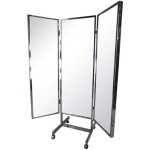How To Do Screen Mirroring From Laptop to TV in Windows 11
Screen mirroring allows users to duplicate their laptop's display onto a larger screen, such as a television. This functionality is beneficial for presentations, entertainment, and collaborative work. Windows 11 offers several methods for screen mirroring, each with its advantages and requirements.
Using the Wireless Display Feature
Windows 11 provides built-in support for wireless displays using the Miracast standard. This method offers a cable-free connection, allowing for greater flexibility in setup and usage. To utilize this feature, the television must also be Miracast-compatible.
Users can initiate the connection process by pressing the Windows key + K. This opens the "Cast" quick action menu, which displays available wireless displays. Selecting the desired television from the list initiates the connection. The television may display a PIN code that needs to be entered on the laptop to confirm the connection and ensure security.
Once connected, the laptop's display will be mirrored on the television. Users can then control the displayed content directly from their laptop. Adjusting display settings, such as resolution and scaling, can optimize the image quality on the television.
Troubleshooting tips for wireless display issues often involve verifying network connectivity and ensuring both devices support Miracast. Updating drivers for the wireless adapter on the laptop can also resolve compatibility problems.
Connecting with an HDMI Cable
A wired connection using an HDMI cable provides a reliable and stable screen mirroring experience. This method is particularly useful for situations requiring high-quality video and audio transmission, such as streaming high-definition movies or playing games. HDMI cables are readily available and offer varying specifications, so selecting a cable that meets the user's requirements is essential.
To establish the connection, plug one end of the HDMI cable into the laptop's HDMI port and the other end into the corresponding port on the television. The television's input source needs to be switched to the HDMI port the cable is connected to. Windows 11 will typically detect the new display automatically and adjust the screen mirroring settings accordingly.
Users can further configure the display settings through the Windows 11 Display settings menu. This allows customization of aspects such as resolution, orientation, and multiple display modes (duplicate, extend, second screen only). Selecting the appropriate settings ensures optimal viewing based on the content being displayed.
Utilizing Third-Party Applications
Several third-party applications offer screen mirroring functionality, often providing advanced features beyond those available in Windows 11. These applications may support different streaming protocols or offer specialized tools for specific use cases, such as gaming or media streaming.
Researching and selecting a reputable application is crucial, considering factors such as compatibility, features, and user reviews. Some applications may require both the laptop and television to have the application installed, while others may utilize existing technologies like DLNA or Chromecast. Understanding the application's requirements is essential for successful setup and operation.
Once the chosen application is installed on both devices (if required), follow the application's instructions to establish the connection. Configuration options within the application may allow for further customization of the mirroring experience, including settings for audio streaming and video quality. Consulting the application's documentation can provide guidance on specific functionalities and troubleshooting steps.
Adjusting Audio Output
When screen mirroring, managing the audio output is an important consideration. Windows 11 allows users to select the audio output device during screen mirroring sessions. This is accessible through the sound icon in the system tray. Selecting the television as the audio output device routes the audio from the laptop to the television's speakers, providing a synchronized audio-visual experience.
Alternatively, users may choose to utilize the laptop’s speakers or connected headphones for audio output if desired. This flexibility allows for various audio setups depending on the specific use case and preferences.
Troubleshooting Connection Problems
Occasionally, users may encounter connection issues during screen mirroring. Common problems include a lack of detection of the television, intermittent connection drops, or poor video quality. Several troubleshooting steps can help resolve these issues. Verifying network connectivity, updating display drivers, and ensuring both devices are compatible with the chosen mirroring method are important initial steps.
Restarting both the laptop and the television can resolve temporary software glitches. Consulting the television’s and the mirroring application's documentation can provide specific troubleshooting guidance for the respective hardware and software combinations.

How To Wirelessly Connect And Project A Tv From Windows 11

How To Wirelessly Connect And Project A Tv From Windows 11

How To Use Tv As A Monitor For Your Windows 11 Pc

How To Connect Your Windows 11 Pc Laptop Wirelessly A Samsung Smart Tv Through Screen Mirroring
Lg Desktop How To Connect A Wireless Display On Windows 11 Usa Support

How To Screen Mirror Cast Windows 11 Samsung 4k Smart Tv Roku

How To Project Your Windows 11 Screen Another Pc Smart Tv Or Xbox Using Miracast

How To Wirelessly Connect And Project A Tv From Windows 11

How To Screen Mirror Stream Laptop Pc Tv Wireless No Adapters

How To Connect Your Pc A Tv Wirelessly 3 Easy Tricks








